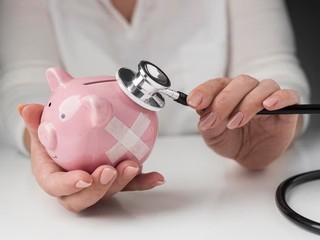

We’ve covered Uber’s attempts to turn its fleet of drivers into a delivery service here many times before, but now it seems to be getting serious about one key aspect of it.
UberEATS, the company’s food delivery service, has just been given a more prominent place in the Uber app, the company has confirmed to VatorNews.
Whereas the service used to be listed at the bottom of the app, as an option next to others like “UberX” and ‘UberBLACK.” Now it has been moved to the top of the screen, as a separate service within the Uber app.
Here is what the change looks like, with the images taken from a report from Business Insider on Monday:


“The new interface is available in UberEats cities. The layout separates RIDES from EATS and creates a more seamless, intuitive experience across services. We are always experimenting to find new, creative ways to make the Uber app more user friendly,” an Uber spokesperson told me.
Just to be clear: there is nothing that actually changed about UberEATS, just its placement in the app. But that placement is a sign of how important delivery will be to the future of the company.
In February Uber launched UberEATS in Barcelona, teaming up with Plateselector, a Barcelona-based food guide, and said was working with “the best local restaurants in Barcelona to create a changing selection of lunch and dinner meals that you can receive in under ten minutes.”
UberEATS was a slightly rebranded version of UberFresh, the food delivery pilot program for users in certain sections of Santa Monica, California that Uber launched in August of last year. It allows user to order from a prix fixe menu, which includes items from local restaurants such as Tender Greens, 41 Ocean, and Bay Cities Italian Deli & Bakery. Each meal costs $12, and is delivered in around 10 minutes. Also, there is no delivery fee.
It has since expanded UberEATS to Chicago, Toronto, Austin and New York City, and, as Business Insider has pointed out, the company’s job listings page indicates that the company is planning to expand it to Miami, Nashville, San Diego, Philadelphia, Phoenix, Dallas, Seattle, and Houston.
(Note: this is why I could not get the images myself, because UberEATS isn’t available in the Bay Area yet)
Uber’s delivery ambitions
Food has been the most successful of Uber’s delivery experiments, but it is far from the only one. It also tried to get into home goods delivery service, which it also launched in August of last year, Called Uber Corner Store, it was a pilot program in Washington DC, and acted as a way for users to get over 100 items, such as allergy medicine, diapers and toothpaste, delivered right to their door.
In December, the on-demand car service rebranded its delivery service as UberEssentials, calling it “a limited-time-only experiment.” And that experiment, presumably, failed because it was shuttered in January.
The company also has a package delivery service called UberRUSH, which it has sometimes used to hook up with retailers.
Uber is said to be getting ready to launch a new merchant delivery program, with the company entering into partnerships with retailers to deliver their goods.
If this report is accurate, this is going to be big: over 400 merchants either in talks, or already testing it out, including Neiman Marcus, Louis Vuitton, Tiffany’s, Cohen’s Fashion Optical and Hugo Boss.
Uber has also reportedly teamed up with mobile shopping app Spring to test the platform with a limited set of brands, including illesteva, Bing Bang Jewelry, Phyllis + Rosie, Mack Weldon, Jinsoon, Industry Standard, Outdoor Voices and Negative Underwear.
The company has apparently also built a separate app, focused solely on merchant deliveries, which Uber drivers will use to take orders.
The food delivery space
Uber isn’t the only tech company that is looking to expand into food delivery. Groupon bought food delivery marketplace OrderUp in July, and launched its food delivery service in Chicago at the end of that month.
Square is also getting in on the action. In April it acquired Fastbit, and integrated it with Caviar, the food delivery company it bought in August of last year.
There are a lot of food delivery companies out there, but the one that looks to be hurt the most by these moves is GrubHub, according to a research report from Kevin Kopelman, analyst at Cowen & Co.
“We view this as a subtle but significant change recognizing food delivery as Uber’s second major category ahead of a broader rollout,” Kopelman wrote.
“UberEATS remains small today in both geographic scope, food options, and user adoption. However, Uber’s recent moves signal some traction in markets where UberEATS has rolled out and point to aggressive expansion of food delivery as a core Uber service.”
GrubHub’s growth is slowing, and Uber might be able to take advantage of that. It had only 25% year-to-year growth in the second quarter, down from 33% in the fourth quarter of 2014. With Uber’s reach, Kopelman believes that UberEATS could have 50% of the market by the end of this year.
2015 has seen a lot of activity in food delivery, and now this space is about to get really, really interesting.
VatorNews has reached out to Cowen for a copy of their report. We will update this story if we learn more.
(Image source: ubereats.com)















